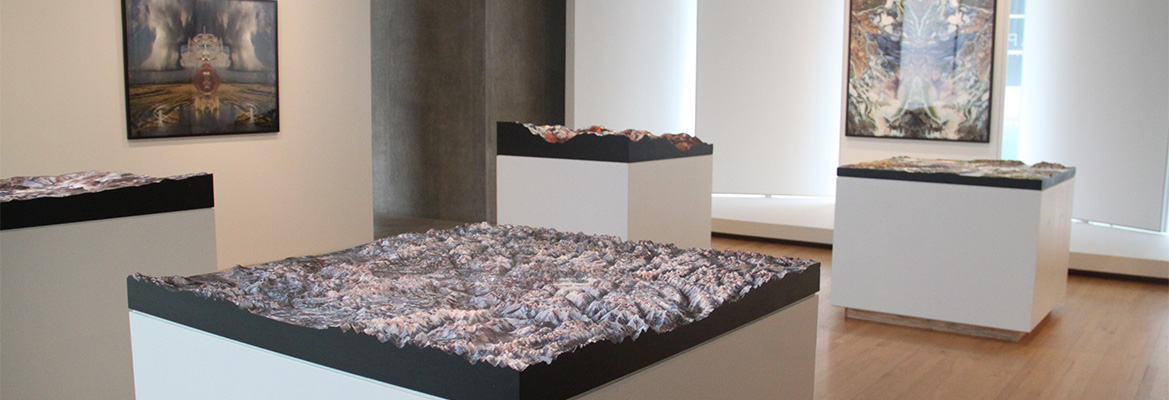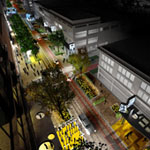The exhibition “Two Sides of the Border” will be on display through Feb. 26, 2021, in the Fred and Mary Smith Exhibition Gallery in Vol Walker Hall on the University of Arkansas campus.
This is part of the public exhibition series in the Fay Jones School of Architecture and Design.
This exhibition features work initiated by Tatiana Bilbao, a Mexican architect and educator who leads the Mexico city-based multicultural and multidisciplinary office Tatiana Bilbao Estudio. The exhibition was designed and curated by NILE, the design office of Nile Greenberg.
Bilbao also will present a virtual lecture on Feb. 15. Registration for the lecture is available on Zoom.
“Two Sides of the Border” is an international collaboration to reimagine the region between the United States and Mexico. It explores what might happen if the United States and Mexico weren’t viewed as two separate nations but were instead studied for their shared histories, cultures and economies and were acknowledged as pieces of a single region.
“We are happy that the show ‘Two Sides of the Border’ is opening at this exact time,” Bilbao said. “When I first conceived of the initiative three years ago, it was in response to growing divisions between Mexico and the United States as the president of the USA promoted hate and separation between the nations through his Build the Wall campaign. Now this project, that aims to reach across divisions for a more hopeful and connected future, feels attainable with the results of the presidential election. We can once again imagine a better future, a unified region built on sharing and cooperation.”
The exhibition is composed of research and works from 129 students, 21 professors and 13 studios within 12 academic institutions. These are supplemented by a regional photography project by Iwan Baan and commissioned maps by Thomas Paturet.
During the spring 2018 semester, Tatiana Bilbao organized an academic initiative called “Two Sides of the Border: Reimagining the Region.” The exhibition presents the works of 13 architecture studios across the United States and Mexico that participated in the initiative, examining regional issues across the two countries.
To redefine and reimagine these territories in conflict as an integrated whole is a critical project for architectural, political and cultural institutions today. It challenges the tools of architecture and architecture education to offer alternatives to current divisive narratives and propose productive unexplored futures.
“‘Two Sides of the Border’ is a very significant contribution to the architectural and urban understanding of the U.S. and Mexico when seen together not only as neighbors but as highly integrated countries and societies, albeit with economic asymmetry and enjoyable cultural differences,” said Gabriel Díaz Montemayor, an associate professor of landscape architecture and Diversity, Equity, and Inclusion (DEI) Coordinator in the Fay Jones School. “Tatiana Bilbao and Iwan Baan are among the leading contemporary architects and urban architectural photographers, respectively. The exhibition also compiles the work of an ambitious endeavor to coordinate multiple academic design studios in multiple universities in both countries. Most importantly, in my opinion, the exhibition expands the notion of the border throughout the whole territory of both nations. And this continental-scale border is the recognition of how we are often numb and insensible to – or sometimes deliberately ignore – how much there is of Mexico in the United States, all the way to Maine and Alaska, and how much there is of the United States in Mexico, all the way to Chiapas.”
“Two Sides of the Border” is an exhibition in the form of an atlas, a book that selectively draws space and defines borders in order to produce a preferred image. The new atlas presents three perspectives: objective, subjective and projective. The objective atlas shows new maps by Thomas Paturet. Capitalizing on the assumption that maps have the capacity to convey realities, these maps dissolve North American borders by emphasizing other geospatial relationships. These are displayed alongside historic maps presenting 400 years of shifting borders in the region, destabilizing the collective imagination of the border.
The subjective atlas is a photo essay by the photographer Iwan Baan, who traveled to each of the studio sites to capture their changing landscapes and architecture’s role in these regional relationships. The projective atlas displays work from the 13 studios’ examinations, which took on interdisciplinary approaches to study and propose projects dealing with cross-regional issues: migration, farming labor in Ohio and Kansas, and remittance houses in Mexico, to name a few.
“Two Sides of the Border” aims to redefine the region and simultaneously is a collaborative project that redefines North American pedagogy. The academic initiative fluidly spans language, borders, institutions and nationalities – all based on the shared interest in developing a comprehensive and unified imagination of the region.
Admission to the exhibition is free. The exhibition gallery is located on the first floor of Vol Walker Hall, and it is open to the public from 8 a.m. to 5 p.m. Mondays through Fridays. The University of Arkansas campus will be closed from Dec. 24 through Jan. 1 for winter break.




